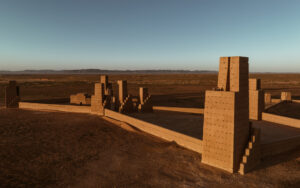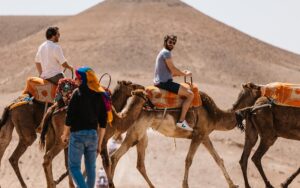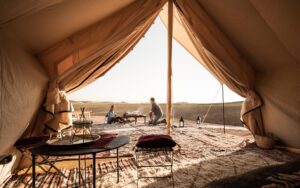Made in Morocco: Inside the workshops of 3 traditional artisans
Morocco is a country with a deep connection to traditional craftsmanship. Walk around the decorated streets of any town or city and you’ll soon come across evidence of Morocco’s ancient trades. From woven carpets to hand-made ceramics, most of these ancestral crafts are executed by master artisans, or maalems, who dedicate their whole life’s work to their craft.
Morocco’s artisanal trades often blend Arab, Berber, Jewish and Andalusian traditions, and the skilled maalems are often continuing the work of their ancestors. You’ll be able to see the results of their efforts at stores and workshops tucked into the medina of old cities like Fez and Marrakech, or out of site in small villages across the country. Rugs tell stories through patterns and colours, while pottery styles vary from region to region. Different towns have different specialities, like Essaouira and its marquetry made from precious Thuya tree wood, or Fez and its leather goods.

At Epic we work closely with local artisans and often take clients into their workshops for a behind-the-scenes look at how things work, or a hands-on class. In this fast-changing world, the children of maalems don’t necessarily want to follow in the footsteps of their parents or grandparents, leaving the family without someone to pass their life’s work onto.
By showing artisans that their work is valuable, and opening up a new revenue stream through tourism, we can open the horizons for what it means to be a traditional maalem in the 21st century.
Let’s take a look at three different Moroccan trades and step inside their workshops.
Read next… 17 Places You Have to Visit in Morocco
Hassan’s Pottery Workshop – in Tamslouht, south of Marrakech
The story of Moroccan pottery starts in the Neolithic period with the local Berbers. Clay has almost always been utilised to craft special objects, and since the 5th century ceramic vases, plates and bowls have been thrown on a potter’s wheel. Continuing ancient traditions is Hassan, an artisan in his early 50s who has been a potter for as long as he can remember. During school breaks he used to learn how to throw clay from his father.
Now his workshop, located in Tamslouht, a village south of Marrakech, employs eight people who work on potter wheels producing mugs, cups, tajine, tangias, plates, vases, pots and more. We often take Epic guests to meet Hassan and explore this centuries-old tradition, passed through generations of the same family.
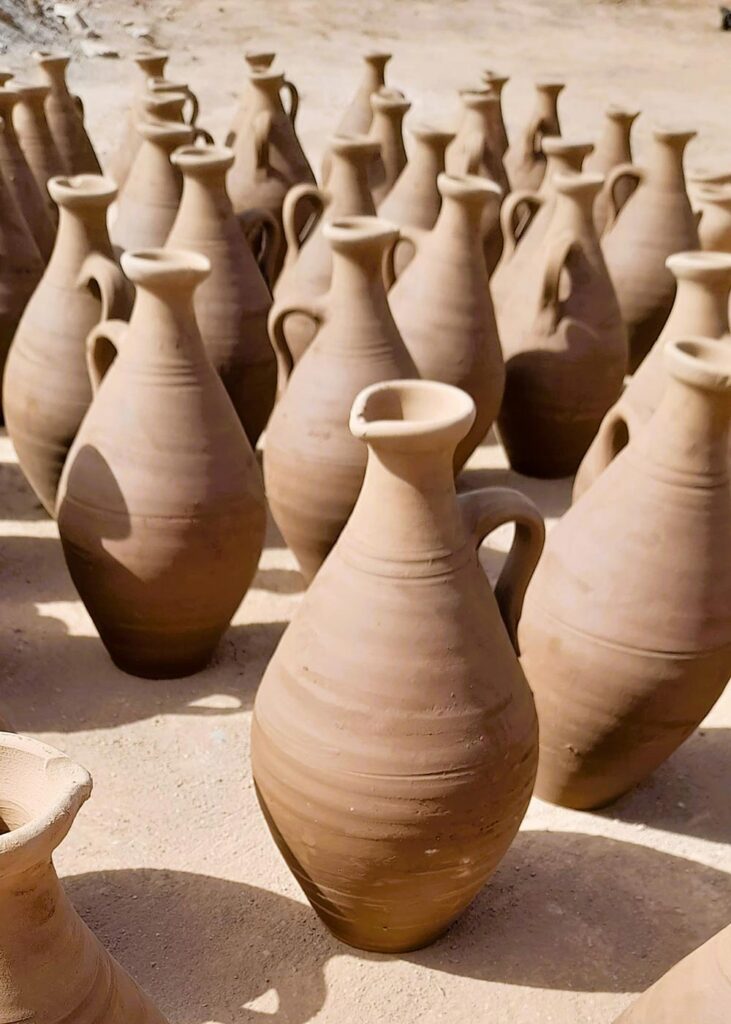
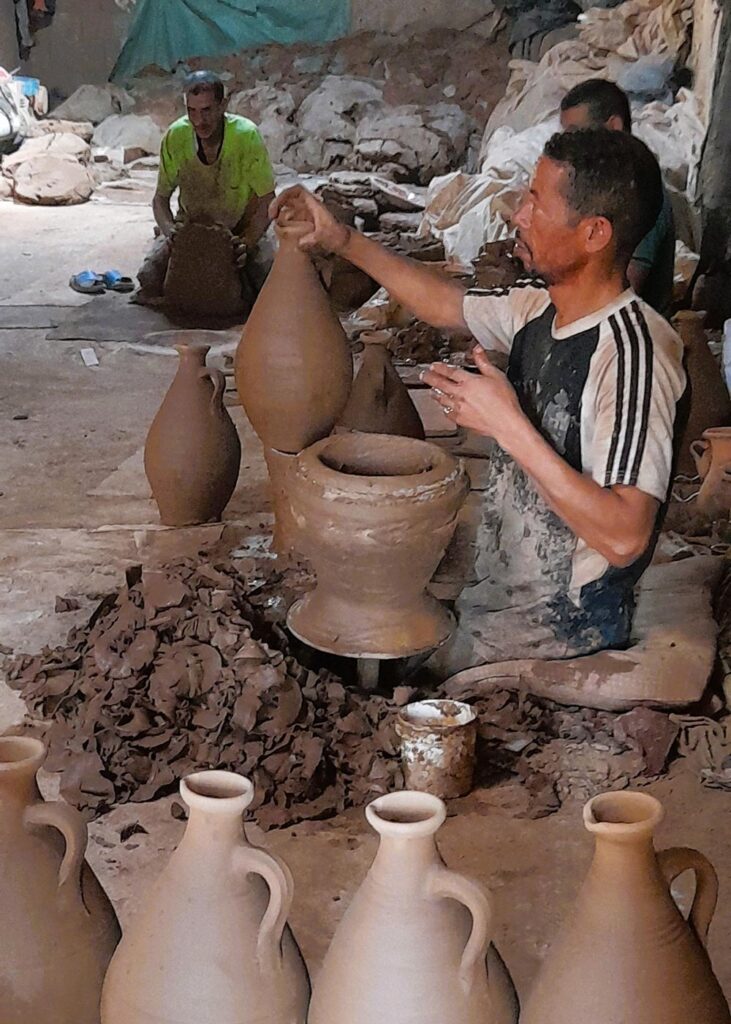
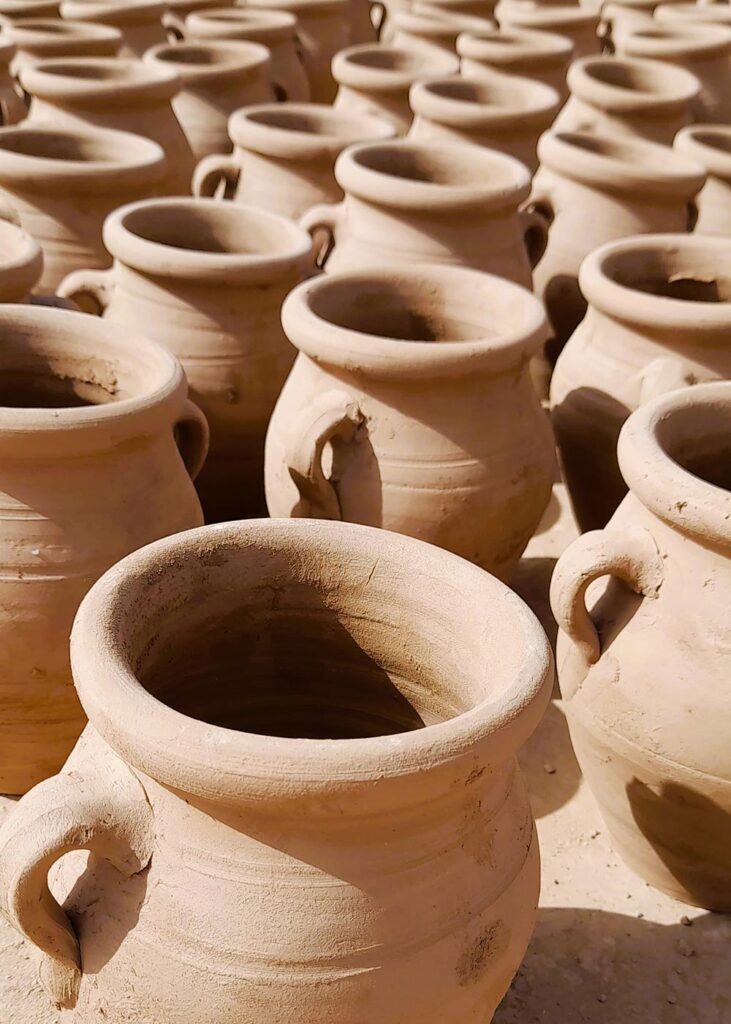
First, the artisans prepare the clay. Dry dirt is sifted, then mixed with water. It’s pulverised then kneaded, cut into strips and rolled. After several stages of clay preparation, the clay is finally ready to use on the wheel. Once the piece is formed, it will be left in the sun to dry out, and later placed in a kiln and fired at between 900°C to 1000°C for four to six hours. Once the pottery has cooled down, it’s time to decorate with glazes and colours to make it waterproof. Glazed ceramics have been popular in Morocco since 814.
Finally, the beautiful terracotta pieces from Hassan’s workshop are ready for sale. His son helps the family business by connecting with restaurants in Marrakech, and with Moroccan restaurants in the Middle East where they send orders of tajines and so on. Every single day an artisan potter will make between 200-500 pieces in his workshop.
Read next…. Transformation of Tangier: Gritty City to Modern Metropolis
Zellige from Fez, finished in Marrakech
Zellige, the mosaic art of individually hand-chiseled tiles, is famous worldwide for its connection to the city of Fez. Historically the geometric and floral designs of zelliege tilework were mostly used to decorate the most opulent royal palaces. Maalems, or master craftsmen, start learning how to create these complex Islamic geometric motifs as apprentices. With just a chisel they’re able to create amazing patterns, like radiating stars.
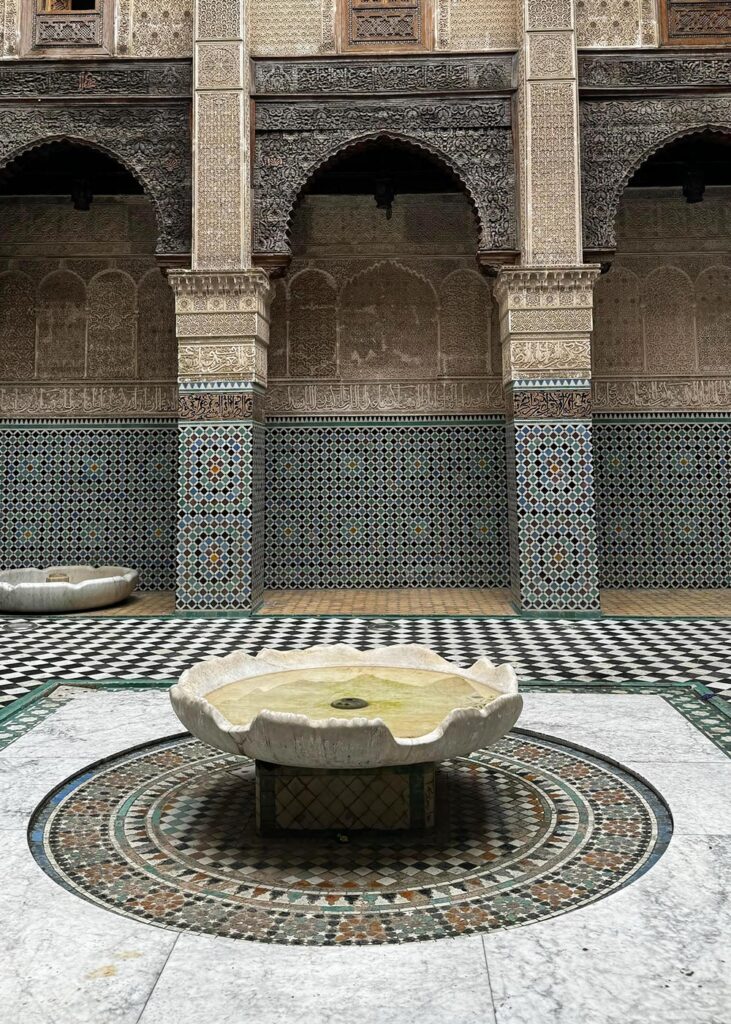

It starts with the highest quality clay, always found in the Fez. The clay is soaked in water until it becomes soft. It’s filtered by hand for impurities (to remove rocks and branches) then a craftsman flattens the clay into square shapes by hand, ensuring it is compact and with no air bubbles in it (otherwise it’ll crack when it’s fired) The square raw clay tiles are sun-dried on a rooftop.
Once dried, another skilled craftsman applies the glaze colors to only one side. Then the tiles are meticulously stacked in a natural pit kiln. In these traditional Moroccan kilns the heat circulates unevenly, which makes the colours and textures unique and varied. This artisanal imperfection is what sets Moroccan zellige apart from every other tile on Earth.
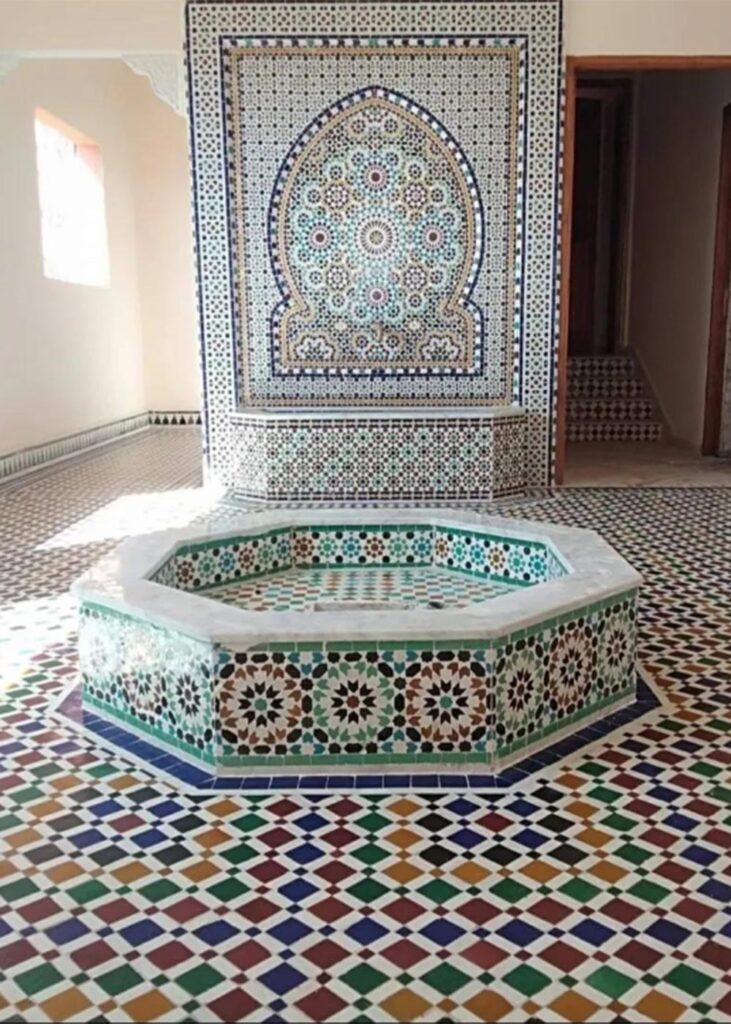
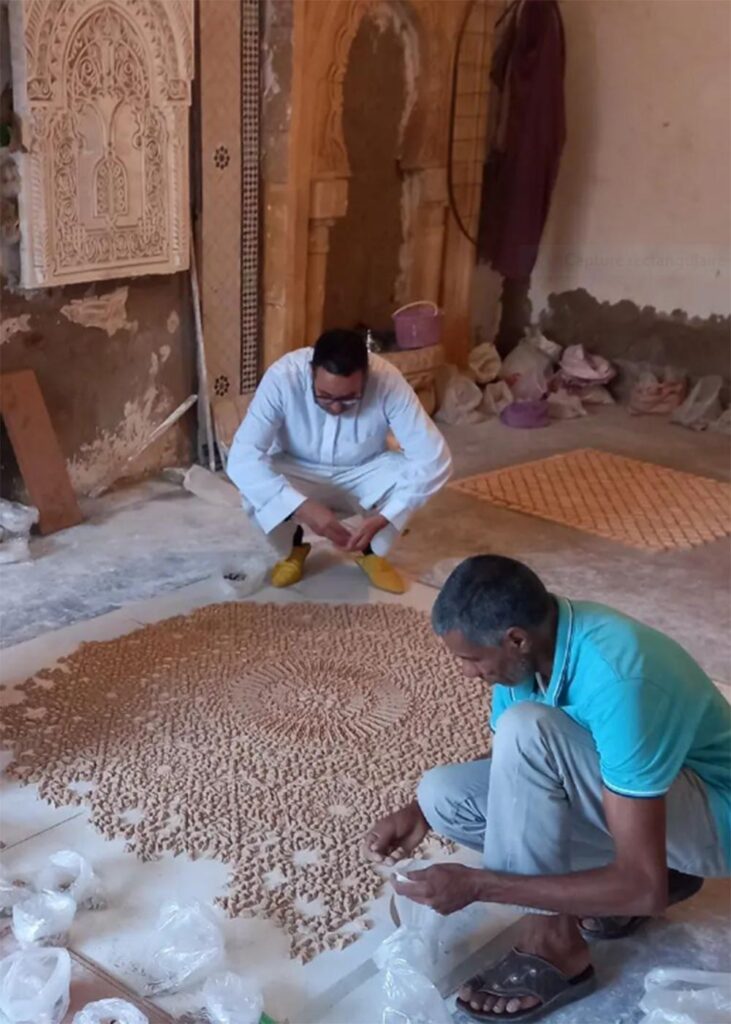
Once fired, a skilled artisan will use a medieval tool called a ‘menkach’, a combination of an axe and hammer with a very sharp tip. They will cut and shape each tile into the desired shape. This intricate process involves great patience and skill. The result is Moroccan zellige tile with both tonal and size variation, along with small chips and cracks to cherish and celebrate.
One of our favourite zelliege workshops is actually in the Marrakech medina. Operating since 1978, Aziz has more than eight artisans working with tiles fired in Fez at his workshop, Zelije Designs. These artisans have been working with this craft for many years – some learnt during their school holidays, others attended professional training centers where they mastered their zellige craftsmanship. A truck from Fez brings tiles so they can use the menkach to make fountains, tables, frames, wallcoverings, and more.
Read next… Erg Chigaga: Starry nights in Morocco’s lesser-known Sahara Desert
Making your own drum in Fez
Tucked deep in the Fez medina there’s a traditional drum workshop run by a father and son. For more than 50 years this space has been producing traditional Moroccan drums with a ceramic body and skin made from cow, camel and fish leather (yes, really).
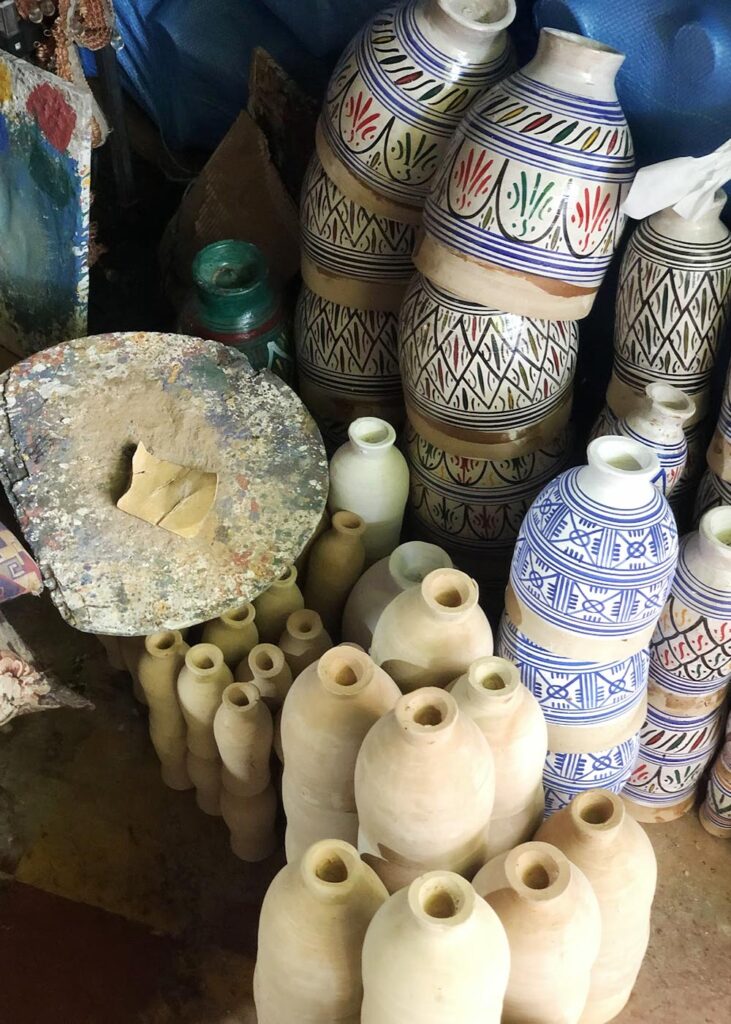
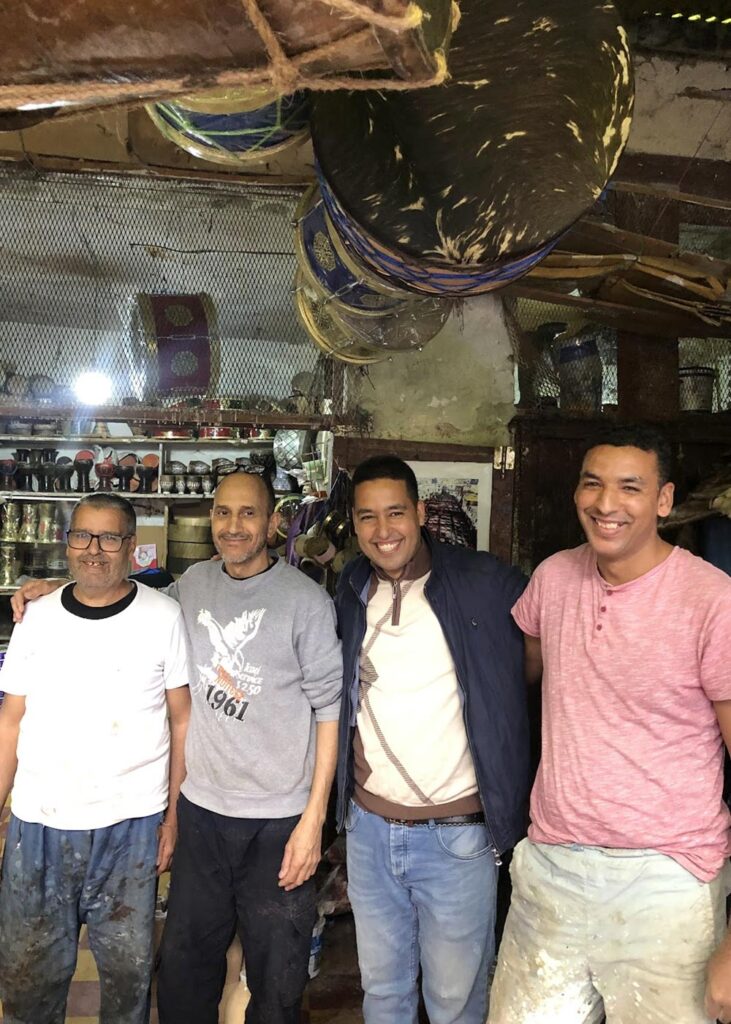
Mohamed, the son, is now in charge of the family business and he runs the show. His father Abdelkader, works with the leather. In their workshop, with the help of Abdul and Aziz, they produce around 40 drums per day. Abdelkader learnt the trade from his father, but of his nine children only one wanted to learn. He didn’t go to school – drum making was his education. He says it takes patience and passion, so he fears the art will die with new generations.
Abdul paints the base of each drum with traditional Berber patterns with the help of a wheel. When Epic clients join a drum workshop, they find him to be shy and quiet but very helpful and patient. Painting is harder than it looks!
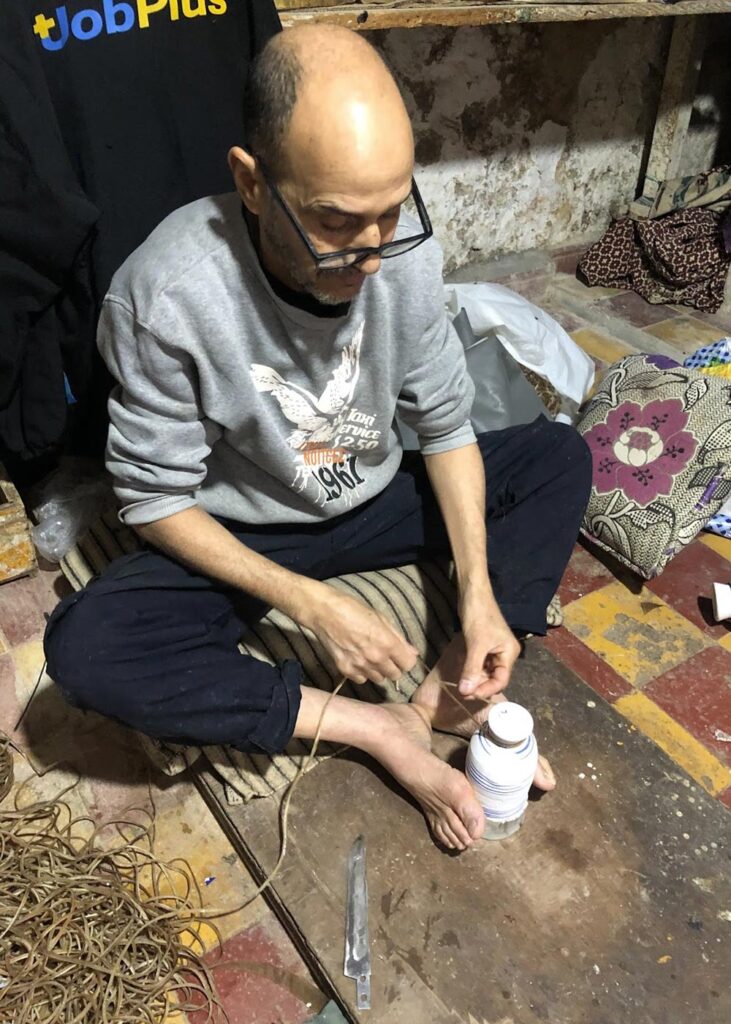
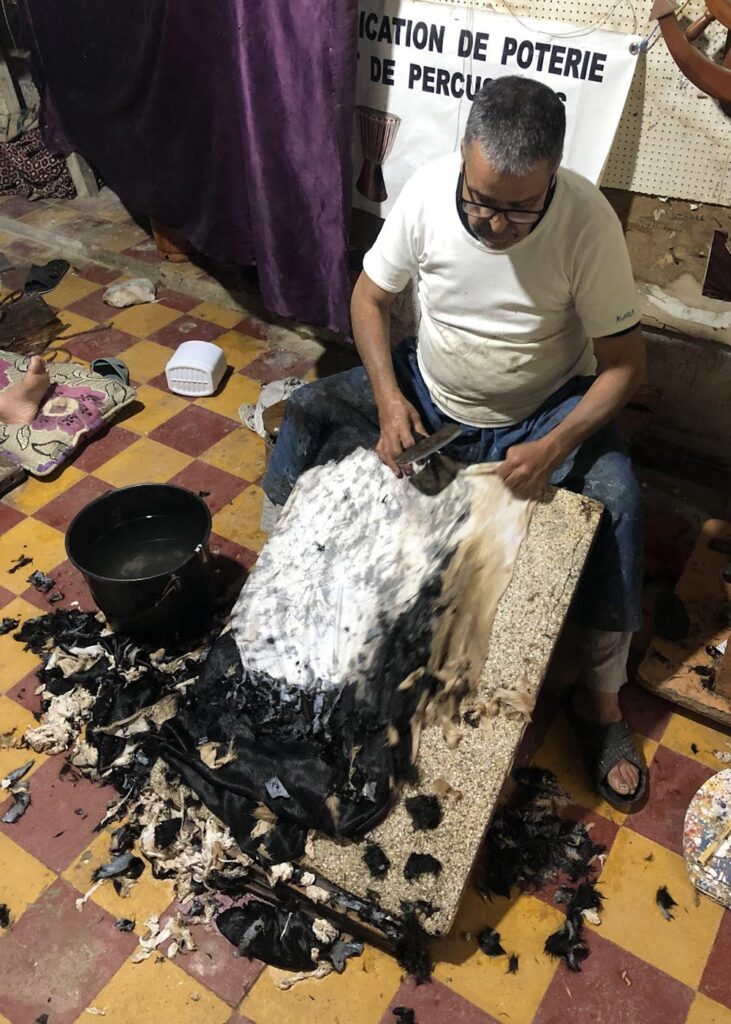
After that, it’s time to choose the leather – cow, camel or fish hide. The different leathers produce different sounds, so you’ll test out some finished drums before making your own choice. The leather is cleaned using a sharp tool and added to the drum with the help of Aziz, an artisan who is also a Taekwondo teacher and has impeccable posture! He uses ribbons of camel leather to tie the leather sheet onto the drum. Then voila, the drum is ready.
After, you’ll join a drum-playing session and have fun learning traditional Moroccan rhythms on your drum with a local musician.
There are endless ways to get involved with artisans, and by understanding the process, it’s much easier to perceive the true value of these precious hand-crafted items. From traditional pieces which have remained much the same over centuries, to more modern interpretations and twists – you can choose. Most importantly you can support these age-old traditions and help to inspire their continuation.
With thanks to Epic’s Hussein Belaid
Hussein is the perfect guide for those who want to see Morocco differently. Born in a little town called Ouazzane in the North of Morocco, Hussein has called Marrakech home for most of his life and now the man with the million dollar smile shares his local finds with Epic guests. Read Hussein’s Being More interview.

If you’d like to meet Moroccan artisans or join a hands-on workshop while in Morocco, reach out to our team at info@epic.travel
Latest Blogs
- The Marha Triangle Experience- ‘where the earth meets the stars’Enjoy an off-grid adventure to the Marha Triangle, where the earth meets the stars – stay within iconic land-art created by a German artist-architect.
- Morocco Unleashed: A high-octane break for high-performing teamsIf your team thrives on gladiatorial challenge, connection and next-level experiences, Morocco is your arena. Let’s unleash it.
- The 72-hour Reset: The Azores’ luxury wellness adventure you can do in a weekendIn a long weekend, you can push your limits climbing the slopes of Mount Pico, trek through volcanic vineyards, plunge into the ocean and refuel with seasonal chef-led meals.
- The luxury of less: Finding freedom with Epic’s off-grid camp adventures“There’s something innocent, elemental and timeless about camping, whether it’s an untamed wilderness experience or a touch of luxury under canvas,” says Epic Adventurer Michael.
